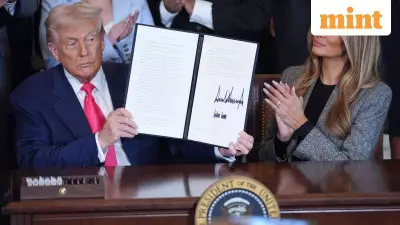
China-Japan Maritime Tensions Reach Boiling Point
Tensions between China and Japan have dramatically escalated following a recent incident involving Chinese coast guard vessels near the disputed Senkaku Islands. The confrontation, which occurred on November 18, 2025, represents the latest flashpoint in a long-standing territorial dispute between the two Asian powers.
Patrols Spark Diplomatic Confrontation
Beijing has firmly defended its coast guard patrols near the islands, known as Diaoyu in China and Senkaku in Japan. The Chinese Foreign Ministry, through spokesperson Mao Ning, rejected Japan's formal protests and asserted China's sovereignty over the territory. Mao Ning explicitly warned Japan against interfering in what China considers its internal affairs, marking a significant hardening of Beijing's position.
The maritime confrontation follows controversial remarks made by Japanese Prime Minister Sanae Takaichi concerning Taiwan. Chinese authorities have characterized Takaichi's statements as representing an "existential threat" to Japan, though the exact nature of these comments remains unspecified in recent diplomatic exchanges.
Historical Context and Regional Implications
The Senkaku/Diaoyu Islands have been a persistent source of conflict between China and Japan for decades. The uninhabited islands are located in the East China Sea and are claimed by both nations, along with Taiwan. The area is believed to contain significant underwater energy resources and holds strategic military importance.
The timing of this escalation is particularly significant, coming amid broader regional shifts and increasing great power competition in the Indo-Pacific. The incident reflects growing tensions not only between China and Japan but also involves broader geopolitical dynamics, including United States security commitments in the region.
Chinese officials have maintained their traditional position, with Mao Ning stating that China's activities in the area are lawful and legitimate. The spokesperson emphasized that China would continue to safeguard its sovereignty and maritime rights regardless of external protests.
Potential Consequences and Future Outlook
This latest confrontation raises concerns about potential military miscalculation in the region. Both China and Japan have increased their military preparedness in recent years, with regular patrols and exercises in the contested waters.
The situation remains fluid, with diplomatic channels between Tokyo and Beijing reportedly active but strained. Regional observers are watching closely to see if this incident will lead to further escalation or if both parties will seek de-escalation through backchannel discussions.
The November 18, 2025 incident marks one of the most serious confrontations in recent months and could have lasting implications for regional security architecture. How both nations navigate this crisis will likely influence future interactions in the East China Sea and broader Indo-Pacific security dynamics.





